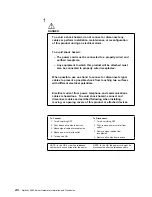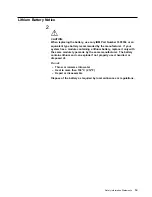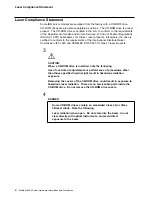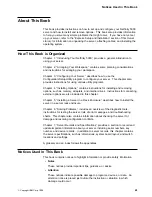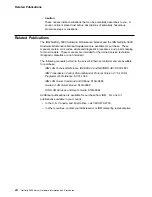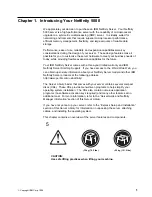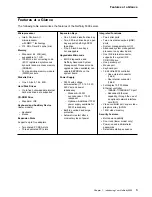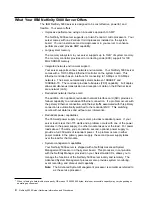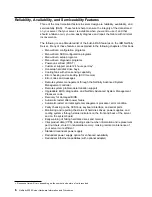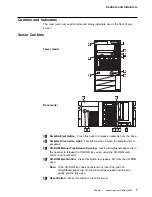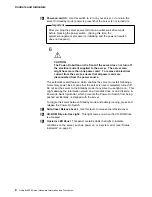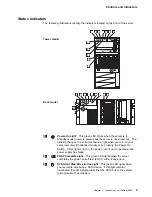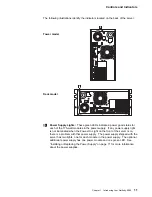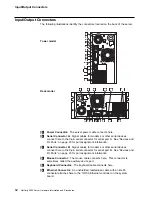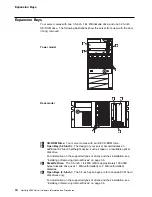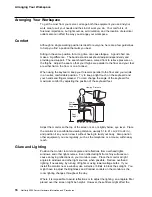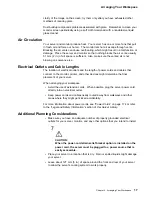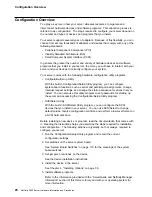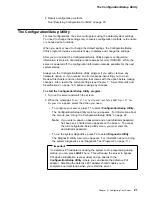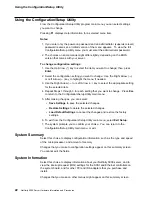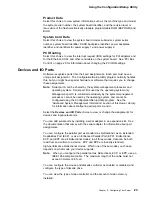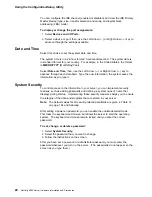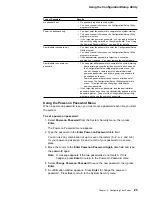
Controls and Indicators
.4/
Primary Microprocessor Activity Light: This green LED blinks to
indicate the activity of a microprocessor installed in the primary
microprocessor socket. The LED comes on during POST to indicate
the presence of the microprocessor.
.5/
Secondary Microprocessor Activity Light: This green LED blinks to
show the activity of a microprocessor installed in the secondary
microprocessor socket. The LED lights during POST to indicate the
presence of the microprocessor. When you install a secondary
microprocessor, it becomes the startup microprocessor.
.6/
System Error Light: This amber LED shows that a system error
occurred. System errors can include high temperature, excess current,
or failure or errors in the microprocessor, system fan, memory, PCI
bus, SCSI bus, USB, hard disk drive, diskette drive, serial port,
keyboard interface, or power supply. When this LED is on, one or
more LEDs on the system board also might be on, indicating where
the error occurred (see “System Board LEDs” on page 168).
.7/
Reserved: This LED is reserved for future use.
.8/
Hard Disk Drive Status Light (Amber): In a RAID environment, this
amber LED lights continuously when the drive is faulty and needs to
be replaced. You can replace these hot-swappable drives without
turning off the server. If you do not have a RAID environment, this
LED is not operational.
.9/
Hard Disk Drive Activity Light (Green): This green LED lights when
the hard disk drive is being accessed.
.1ð/
Ethernet Transmit/Receive Activity Light: This green LED shows
transmission and reception activity on the network.
.11/
Ethernet Link Status Light: This green LED shows an active link
connection on the 10BASE-T or 100BASE-TX interface.
.12/
Ethernet Speed Light: This green LED lights when the Ethernet LAN
speed is 100 Mbps.
10
Netfinity 5000 Server Hardware Information and Procedures

